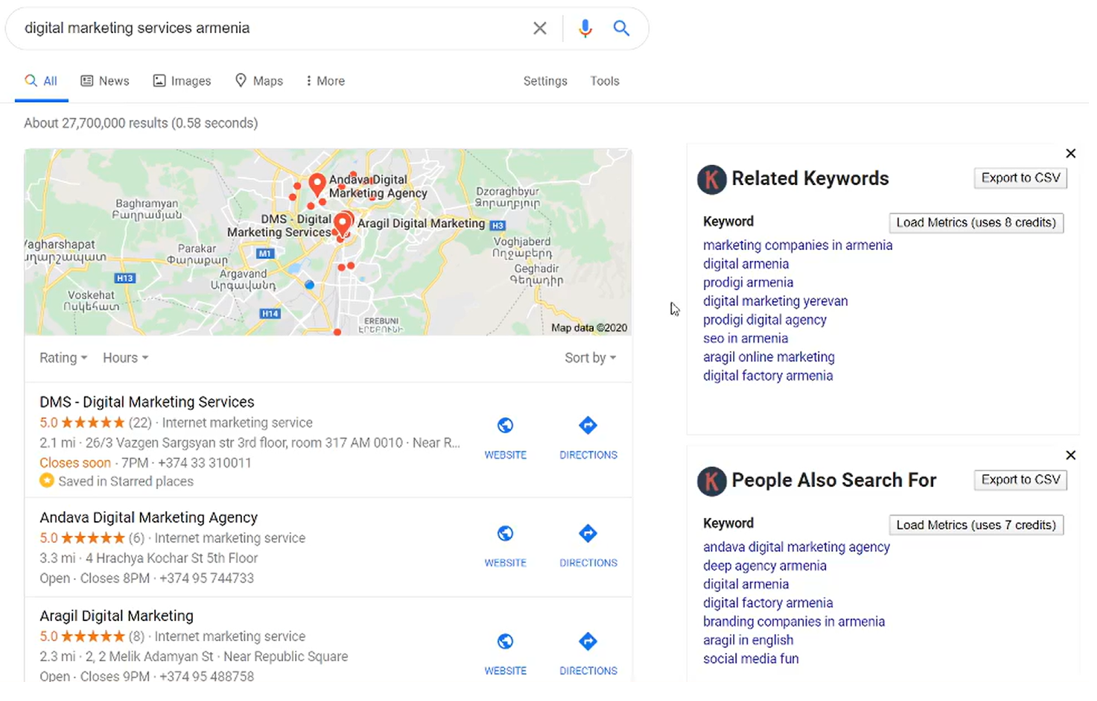
A functional and correctly articulated digital marketing strategy is one of the cornerstones to a successful digital presence in our modern world, where e-commerce and social media marketing have been on the non-stop rise. However, before starting the strategy development process, it is also essential to analyze the competition in direct and indirect substitutes.
Let's understand how competition analysis helps us create a good strategy.
1. You get an overall idea about what platforms are most suitable for your business promotions and where the potential customers are searching for you.
2. You understand precisely where the benchmarks for similar companies are in terms of social media performance, and you can set goals accordingly.
3. You can learn from the mistakes of other similar companies, define what worked for them, what did not, and you can use that knowledge to your advantage.
However, it would be best to keep in mind that what worked or didn't work for other companies is not an accurate depiction of how things will work out for you. Every company has a unique proposition, and potential clients might be sensitive to that.
1. Determining the competitors
2. Gathering information
3. Analyzing the competitors' content and activity
4. Making corresponding decisions
Now let's dive into each one of the steps separately and understand how you can pursue this endeavor.
When looking for a product, most people search for different options online. This is also accurate when doing competitor analysis; you must look for them online. Where you look, however, largely depends on the industry you're in. Nonetheless, an overarching approach would be starting with Google since it encapsulates most of the possible answers to your question.
Start by searching for keywords on Google. If you are a Digital Marketing company, search for those keywords. As a result, you will see the different companies that either optimized their content or used Google ads to appear on the screens of people looking for a Digital Marketing company online. Those as mentioned above are your competitors.
To take another step and get a more comprehensive understanding of your competitors, you can add the Keyword Everywhere extension to your Chrome, which will suggest keywords related to your search.

Most of their websites will have links to their social media accounts, making it easier for you to access their Social Media activity and analyze it. However, if you did not find enough information on Google, feel free to take the same approach and search for the competitors on other platforms, such as Facebook, Instagram, YouTube, Twitter, etc. On these platforms, you can also search for appropriate hashtags and use them in the future.
A good idea would be to create an Excel file and add all the data before moving on. We have a file prepared for you; however, you can feel free to add to and subtract from it whatever you find useful.
However, to take it a step forward, you can use analytics tools such as Sprout Social, Analisa, etc. These tools will give you insights into their account's performance, and you will be able to compare the results with your statistics. The latter will tell you different ways to improve.
Open a spreadsheet and fill out all the necessary information that you gathered.
If you have access to actual statistics, look for those pages with higher engagement and good social media management (e.g., creative and helpful content). These pages are the ones you can learn from if there is a need to adapt.
Look for differences in each company's approach, and take notes of what works for the general customer target that you have in common.
Suppose the higher engagement company posts three times per week, compared to a company that posts every day per week. In that case, you can understand that the customers do not feel excited and happy with that company's presence.
As we mentioned previously, what works for one company might not work for another company and vice versa. Hence, simply copying a successful practice does not guarantee success. Instead, one can always learn from best practices and adapt them to their personal needs, the company's needs in this case.
If you see a lot of creativity in your competitors' social media accounts, think of ways to incorporate your unique creativity into your strategy and content calendar.
Overall, the competitor analysis process is a rather fun and entertaining one. You get to learn more about your competitors and your company's industry, which will help you grow and prosper your social media presence and the company itself. It will help you grow your customer base and convert others into customers by taking them through the sales funnel.
Some of the pages will have a larger content engagement rate, and to figure out how that happens, you can click on their page and see the posts with the highest engagement. This will help you develop potential ideas for new content that interests the customers.

The ad campaigns can also give you valuable insights into your competitors' social media activity. For that, you can take a look at the data provided by the Ad Library, where you can see what ads are run by the company and a short summary of their ad account insights.
All you need to do is open the Ad Library, choose the location and the company you're interested in, and it will show you the ads that that company runs in your chosen location.

As you can see below, it provides Key Insights that will be helpful in your planning stage. It might even give you a new course of action to concentrate on.

Rival IQ also gives you information about the posts, such as how many posts per day are published from each profile, how many days per week had a post, and the percentage of posts with links, engagement per post, engagement rate, and comments per post. It also provides benchmark averages to compare the performances.


What about the website analyses? It can surely reveal many valuable insights into what goes around your and your competitors' website activity.
A great tool that allows you to do that is Similar web. In case your website is connected to Google Analytics, you will be able to see info about the audience, competitors, marketing channels, and outgoing links, all by analyzing the website's traffic.
You can access traffic analysis, market research and industry analysis, competitive analysis, and segment analysis. These categories are useful for understanding the industry benchmarks, competitors' performance, and improvement points.
The best place to start your endeavor is the Instagram hashtag when starting research on Instagram. You can either find relevant hashtags under competitors' posts or search for keywords that relate to your field of operations. Another way to conduct this analysis is by using a tool such as RiteTag, which gives you an overview of what hashtags create interest on Instagram (and Twitter) or gives you similar hashtags to whatever keyword you search for.
All you need to do is write a hashtag relevant to your business, and you will be given a list of hashtags to use to get seen, a report on each one of those, and similar hashtag recommendations.

Moving onto SEO analysis tools, we have Ahrefs, which audits your website, finds out issues with your SEO, helps you keep track of your backlinks, web mentions, and keyword rankings.
With the help of website optimization, you will be able to rank higher on the search engine without needing additional knowledge of SEO.
To use Ahrefs, you need either a 7-day trial or a subscription.

Ubersuggest is an alternative to Ahrefs, with some free-of-charge tools. However, you need to register for a subscription-free trial for the historical data rates. It is once again all about contextual advertising; it helps you find new and relevant keywords for your content marketing, which will help your content have better coverage and more success.

Mozbar is a chrome extension in the form of a bar, which helps you organize SEO on the go. The bar shows information about pages and domains that you search for. The metrics include domain authority, page authority, backlinks, and Spam Score.

vidIQ is a video optimization tool that will guide you with your Youtube channel's growth. Some of the features incorporate marketing tools, video analytics, and various content optimization to grow your Youtube channel and gain larger exposure. The metrics it uses are like-ratio, likes and dislikes, comments, engagements, vidIQ score, etc.
The VidIQ's Keyword Inspection and Competitor Analysis tools also help you understand what content works for your competitors and what metrics you can improve on.











